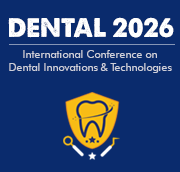Title : Development and implementation of digital technologies for assessing the state of the dental system and assessing its deviations from normal parameters
Abstract:
E.V. Talalaeva (2012) assessed facial aesthetics in individuals with physiological occlusion of the dentition using a 3D scanner system. It should be noted that the index relationships of the soft tissue parameters of the face presented by the author according to the data of photometry, teleroentgenography and three-dimensional scanning are very relevant for their inclusion in our scientific study [1]. A. Rossetti, M.D. Menezes, R. Rosati, V.F. Ferrariom, C. Sforza (2012) used three-dimensional (3D) stereophotogrammetry, which turned out to be the "gold standard" in the field of facial anthropometry. The authors proposed the concept of a three-dimensional analysis of the structure of the dentition by developing a three-dimensional complex model of the head with correctly located dentitions. For the first time, scientists present 3D standards, that is, norms that can be used to diagnose the state of the dentoalveolar system [2]. It is very important to develop computer versions that would allow evaluating facial aesthetics both in normal and with anomalies of occlusion of the dentition A significant number of digital technologies related to the diagnosis and treatment of dentoalveolar anomalies are presented in domestic and foreign literature. Basically, these are digital diagnostic methods related to the interpretation and analysis of teleroentgenograms, anthropometric data and functional studies. A method has been developed for assessing the harmony of the development of the dentition (Hasund A., Segner D., 1991) [6], the harmony of the occlusion of the dentition (Rybakova M.G.,2012) [7However, none of these methods is able to fully assess the dental status of an orthodontic patient, determine the direction of the occlusal line of the upper and lower dentition and predict the direction that may be the result of orthodontic treatment. There is no way to assess the state of facial aesthetics, which would allow more accurate clinical diagnosis and treatment plan. The use of diagnostic and treatment methods in a three-dimensional format will allow you to visualize and analyze the ongoing changes. And we developed a computer version of facial aesthetics assessment.
Audience Take Away Notes:
- The audience will be able to see the program we have developed for assessing facial aesthetics, which is based on the principle of photometric diagnostics.
- This computer program allows you to evaluate facial aesthetics in three mutually perpendicular directions, based on facial features. Accordingly, having understood the principle of assessing facial features, doctors will be able to make a preliminary diagnosis from a photo of the face.
- Other faculty can use this work in their scientific research, since we have done a lot of statistical work and identified many angular and linear parameters that have a strong correlation.
- This research provides a practical solution to the problem because it improves the quality of diagnosis. To automatically calculate facial parameters, you need to upload a full-face and profile photo of the face in the program.
- It improve the accuracy of a design, or provide new information to assist in a design problem.
- Advantages of this program:
- improving the quality of patient diagnostics
- automatic analysis of facial features
- generating a report in Excel format
- new direction of scientific research



